Southern Nevada water agency’s money-losing sideline — ranching, farming
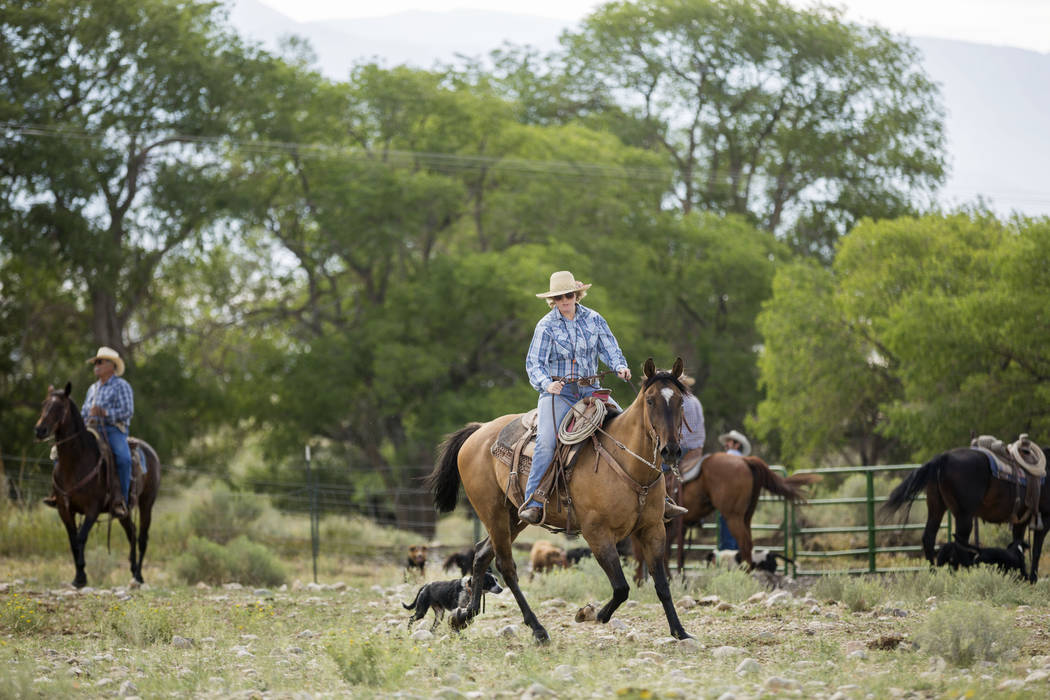
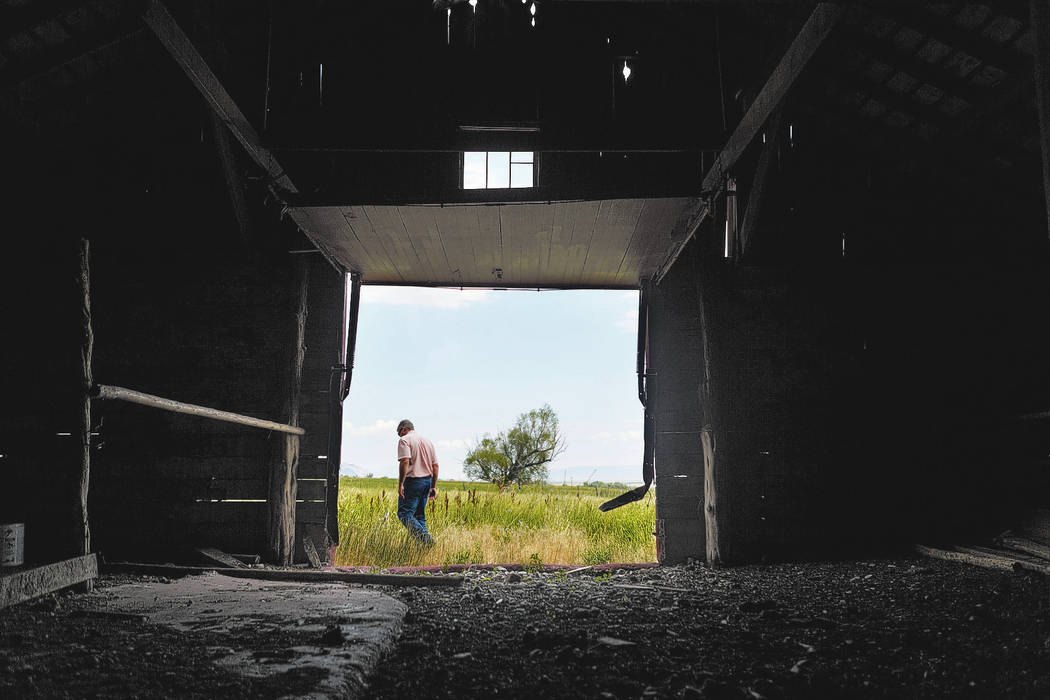
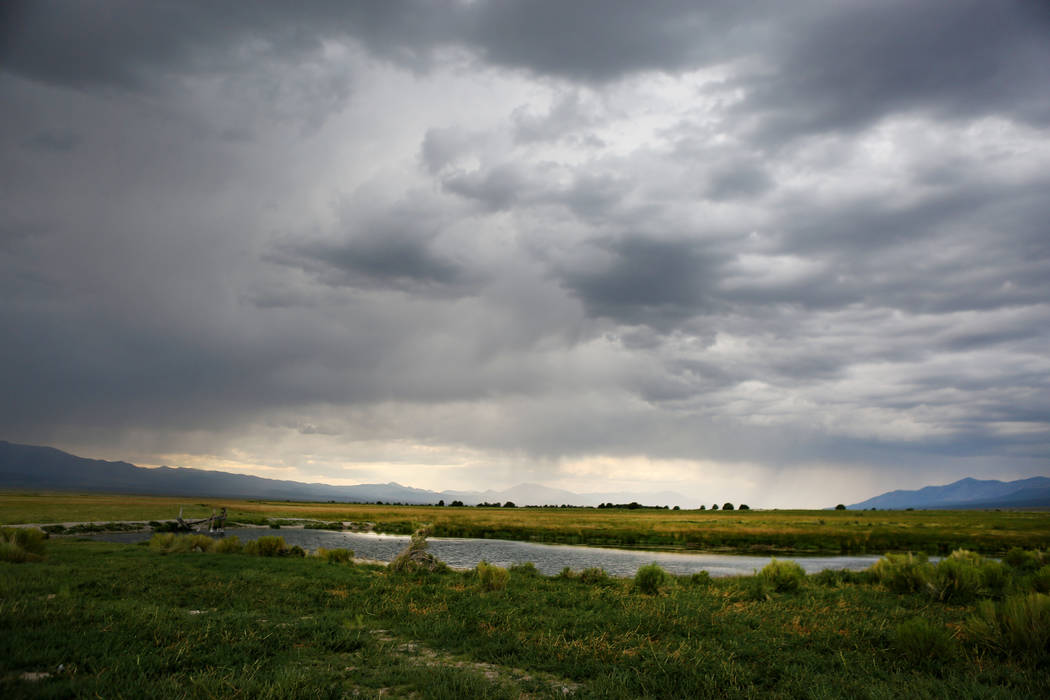
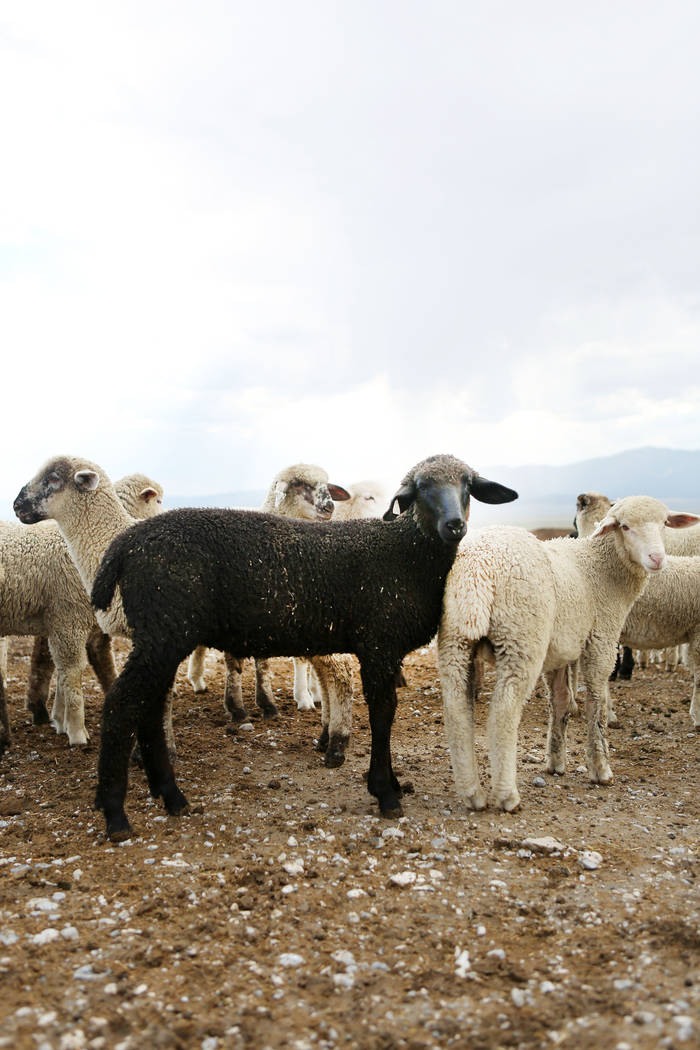
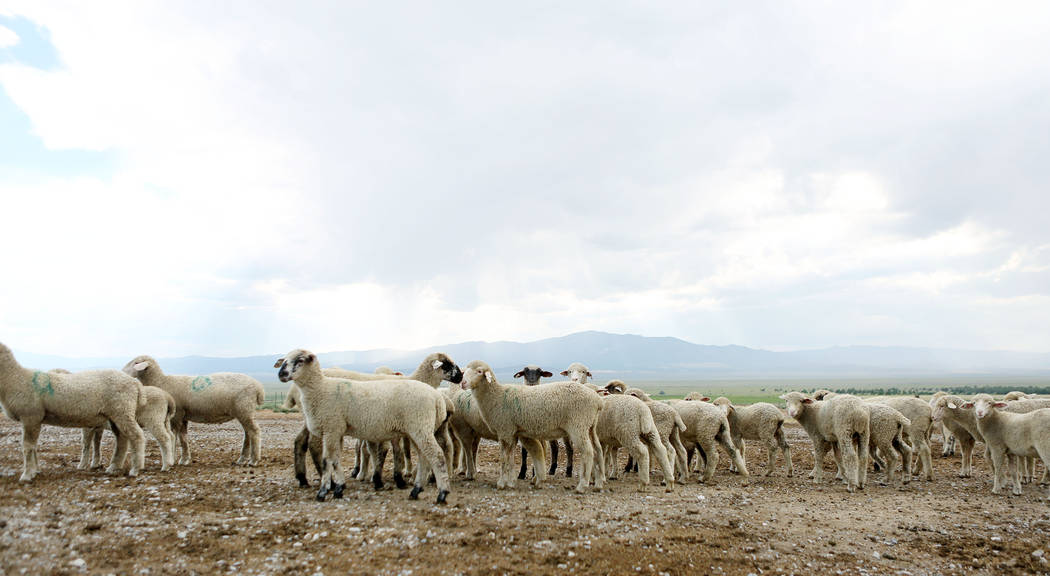

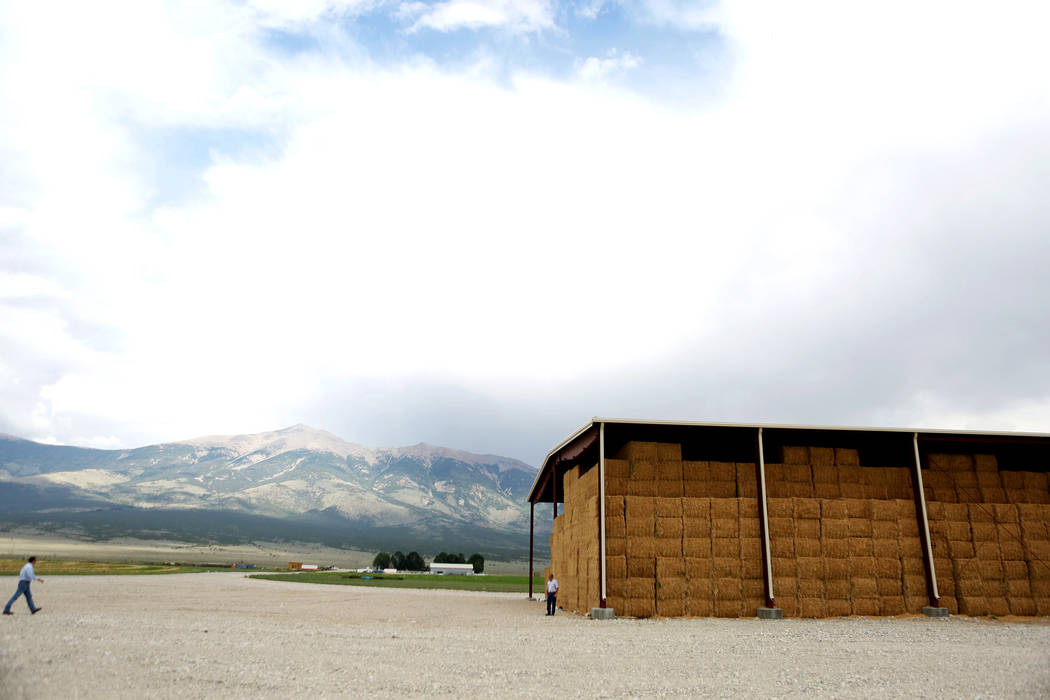
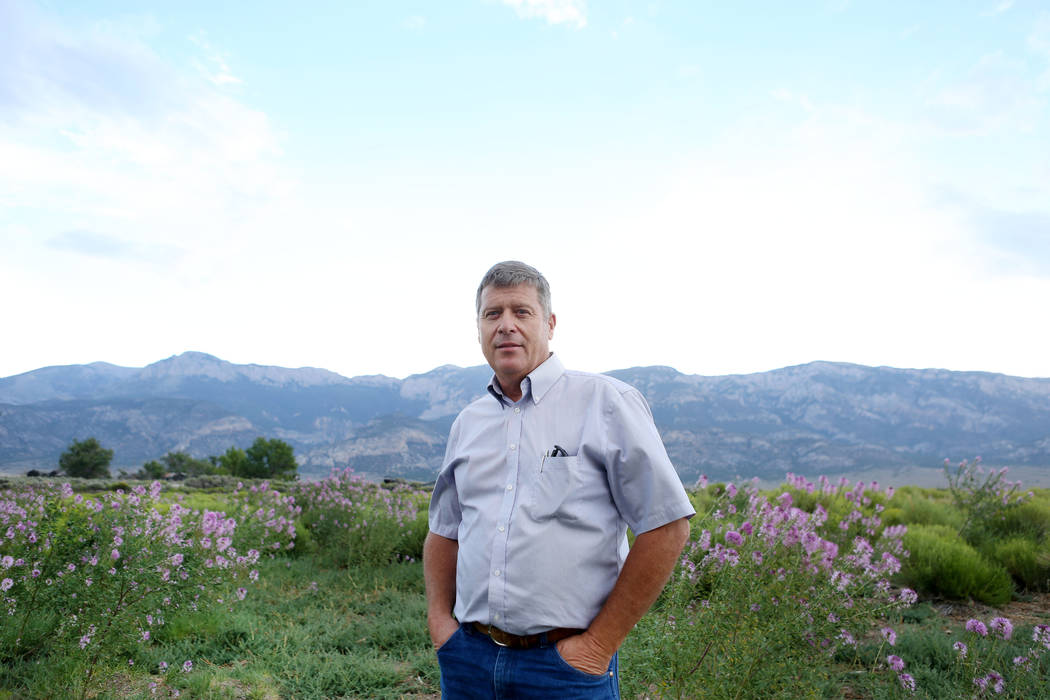
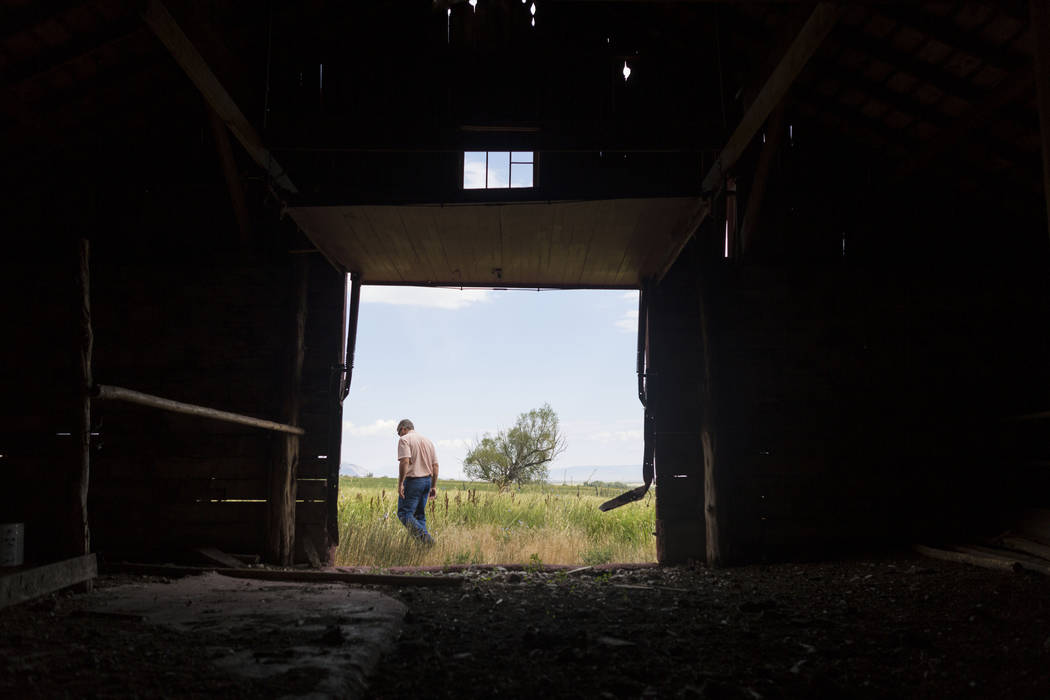

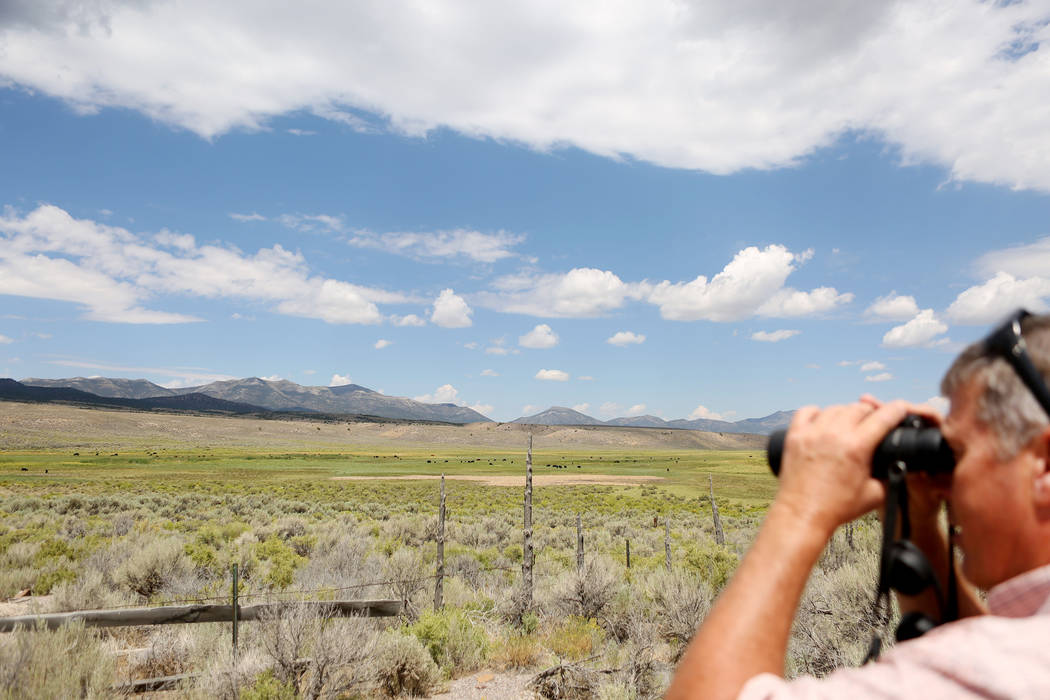
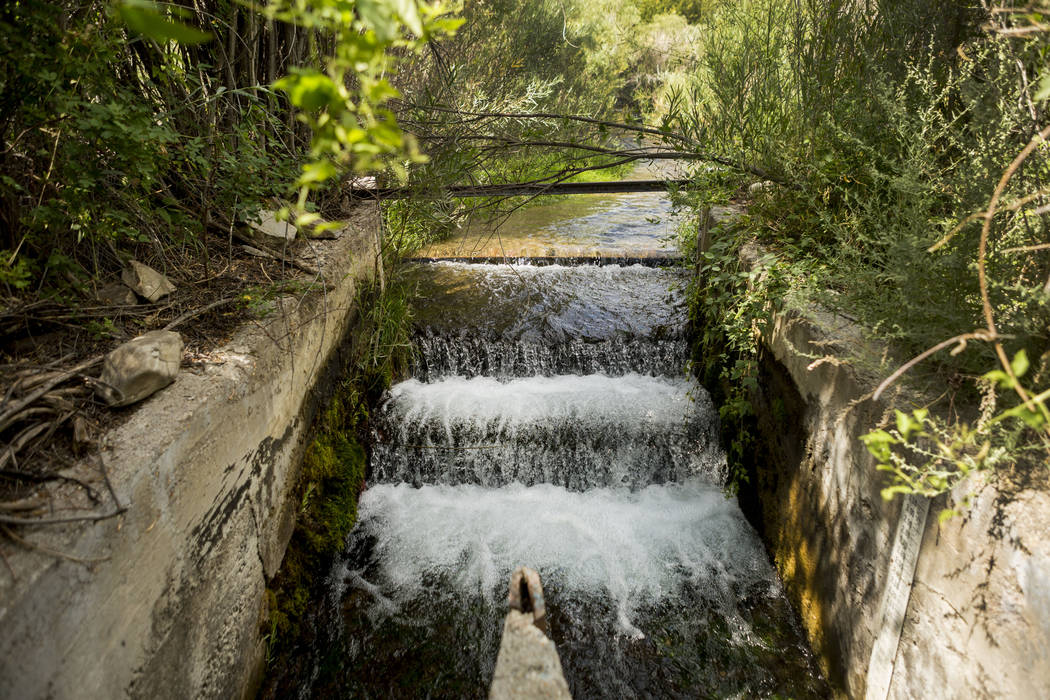


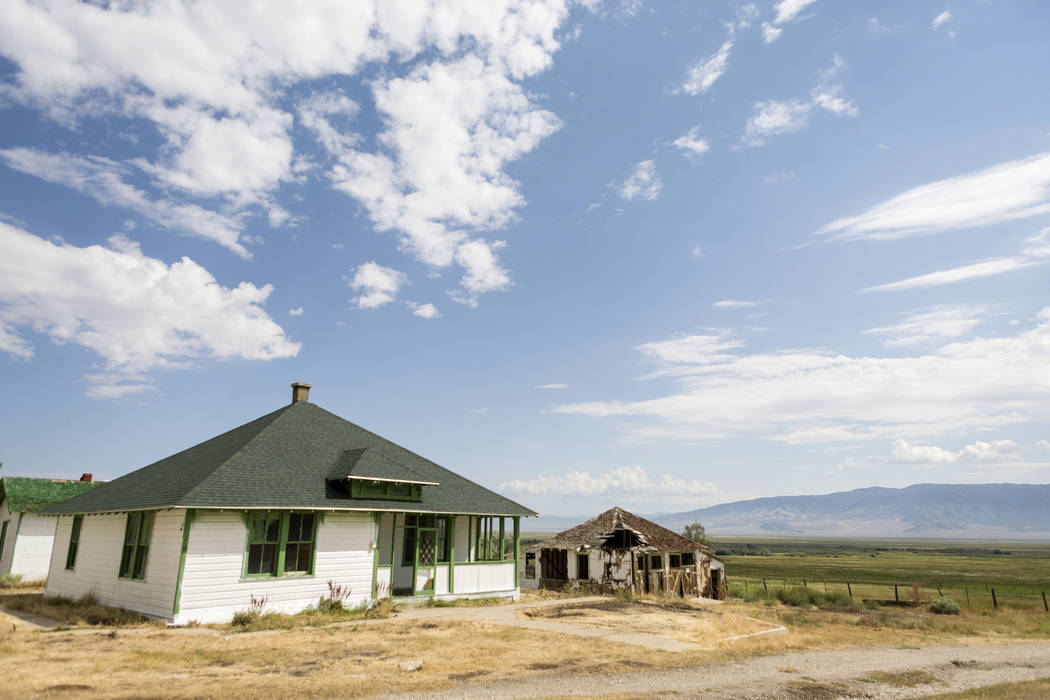


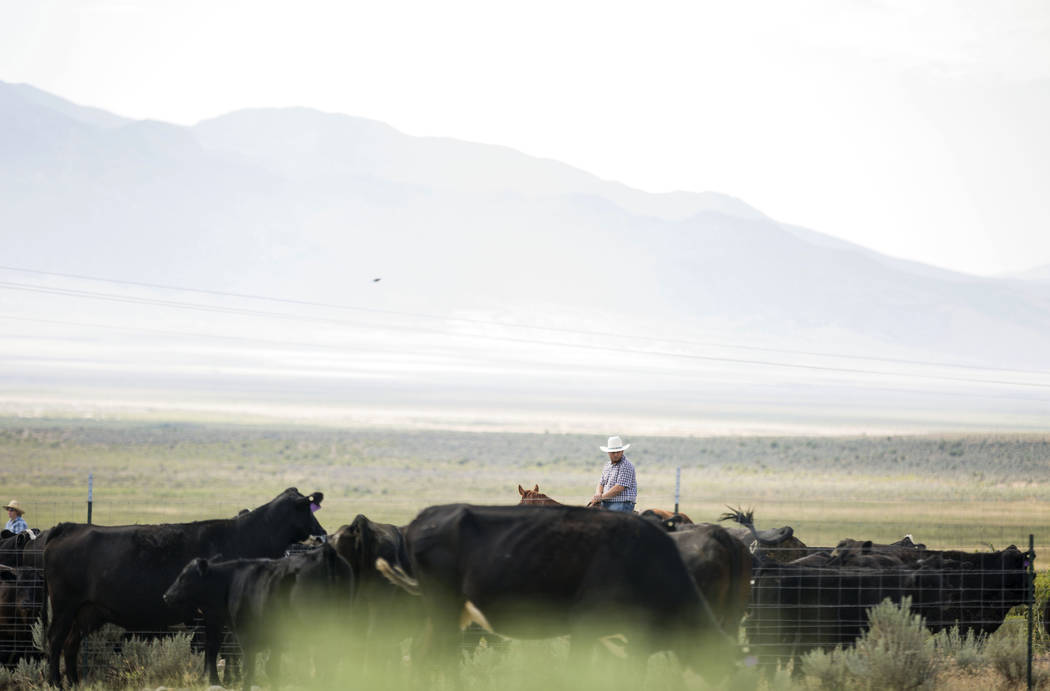
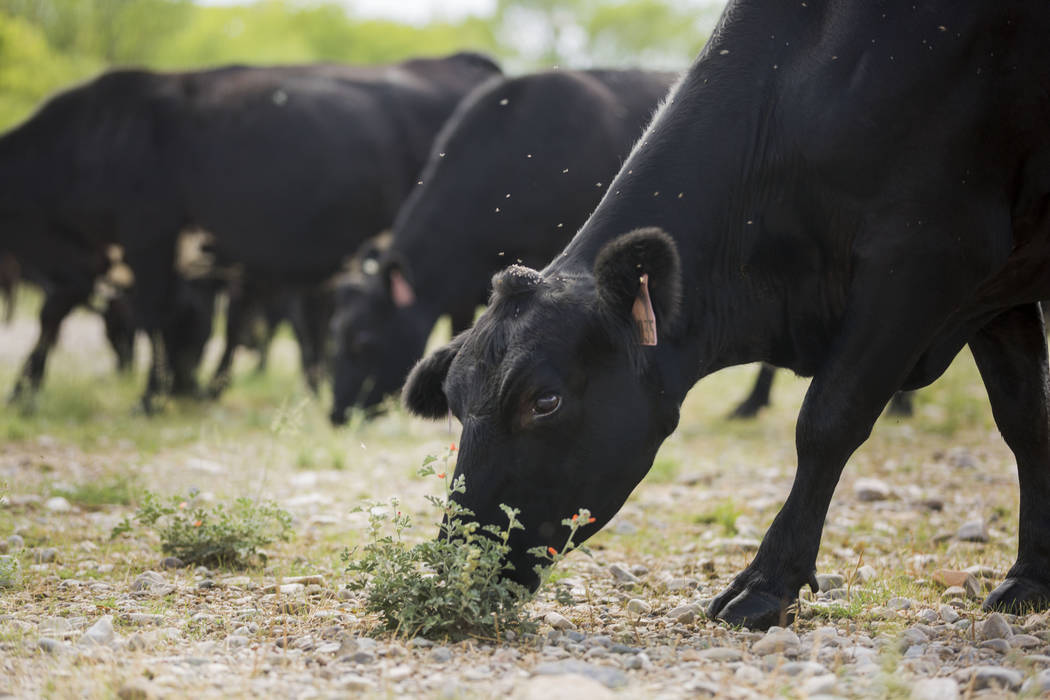


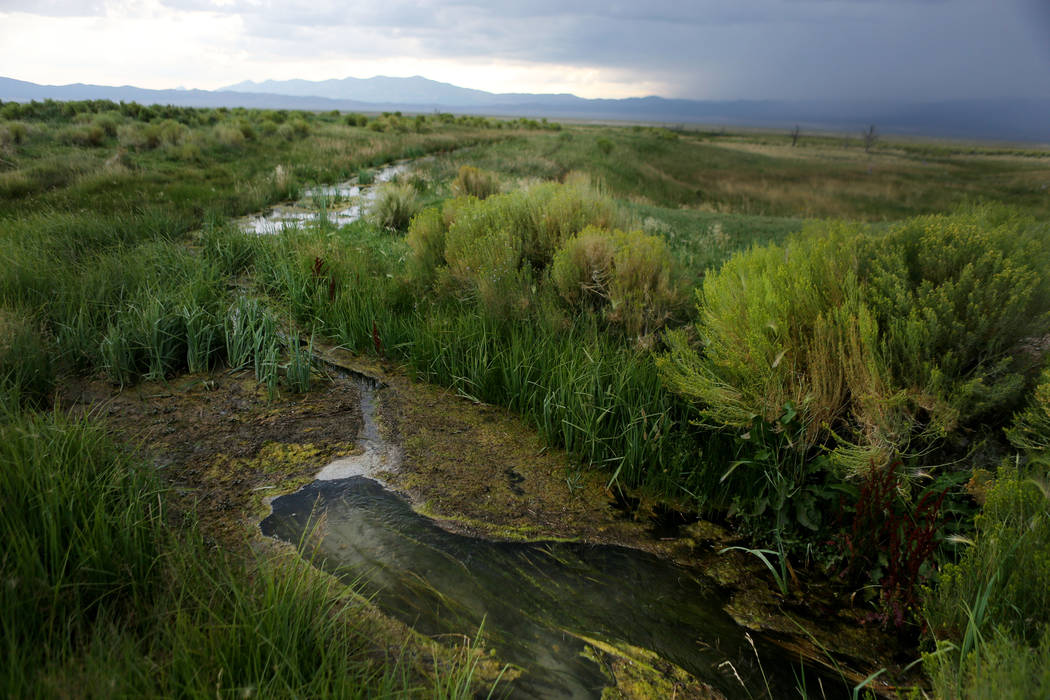

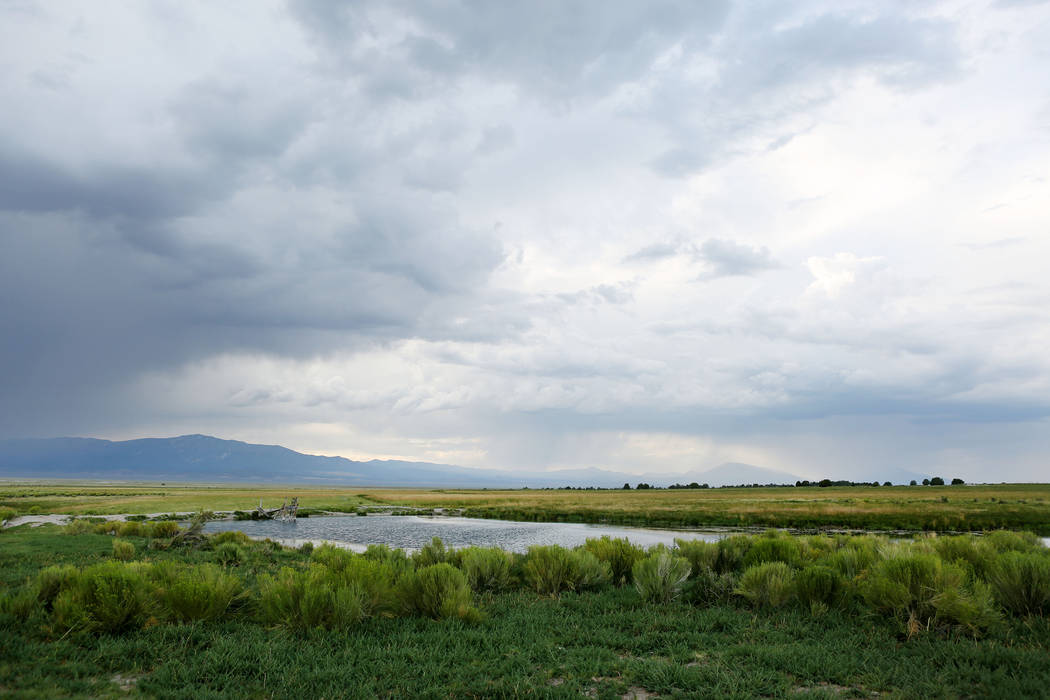
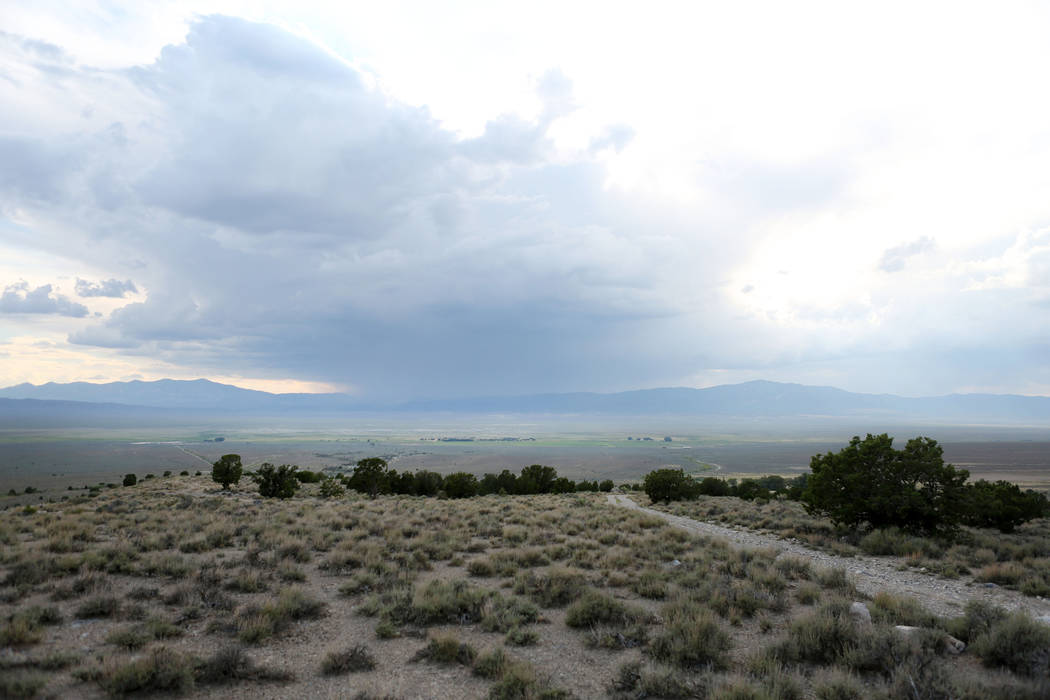
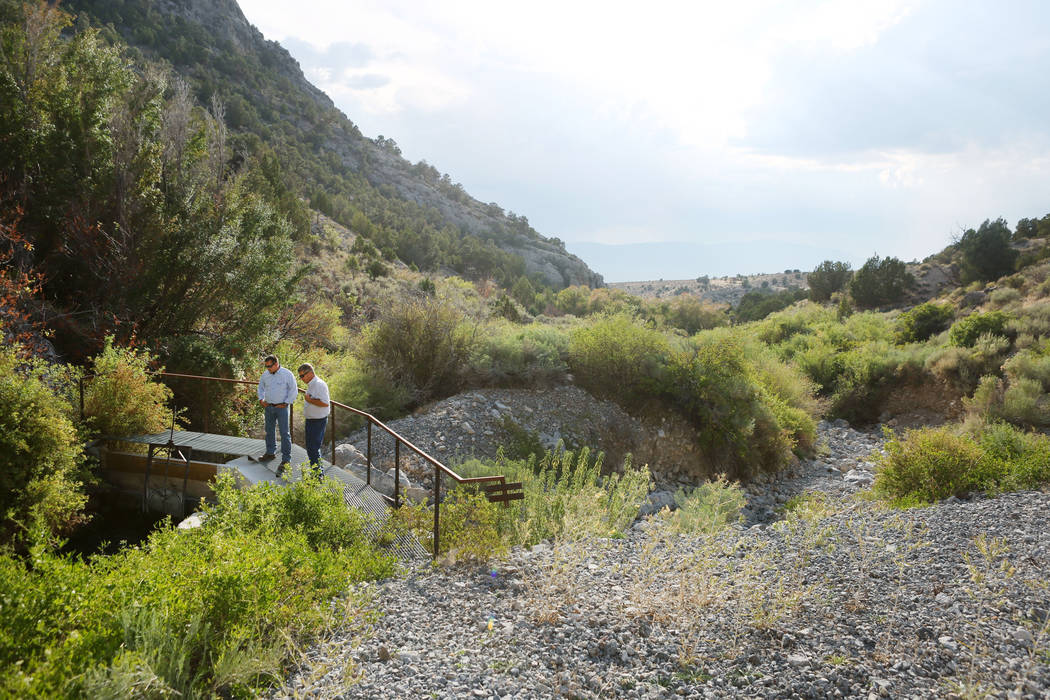


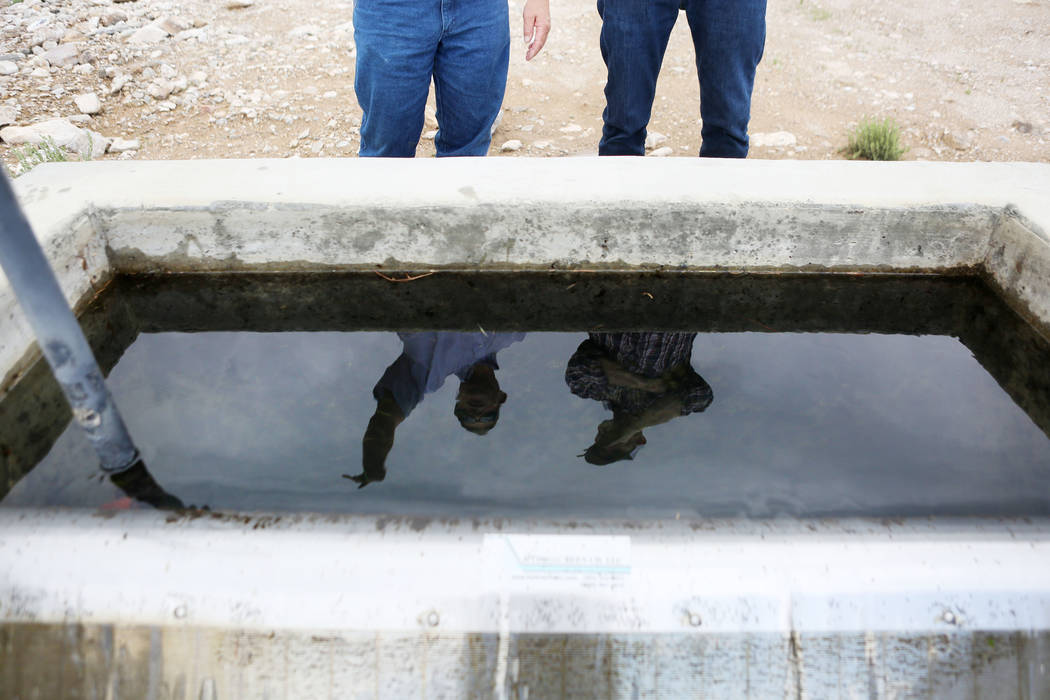
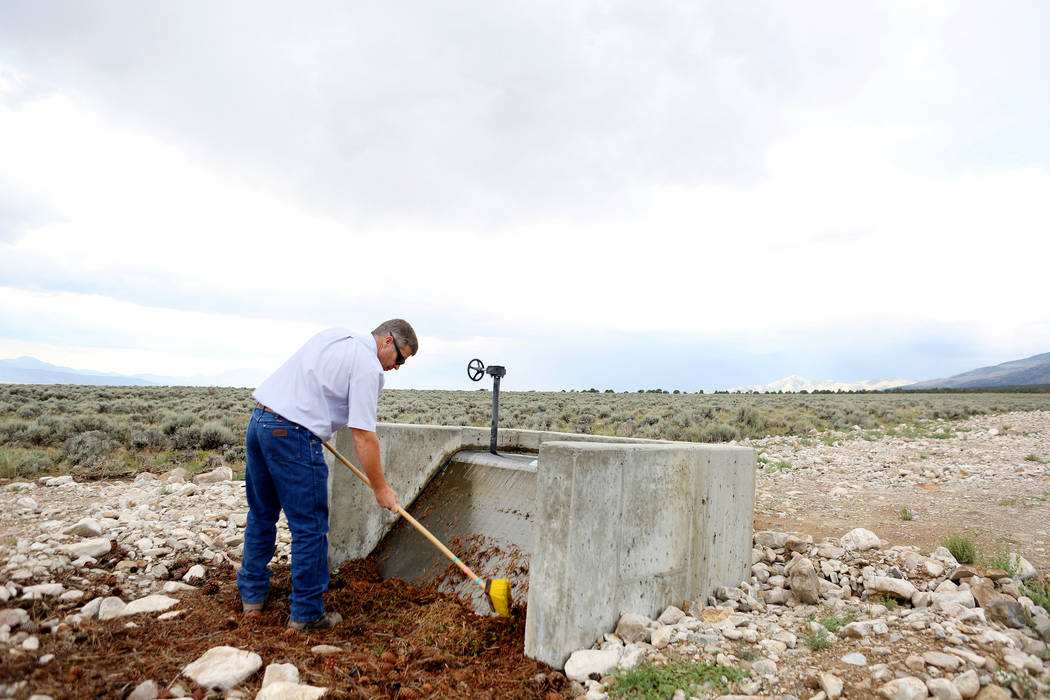
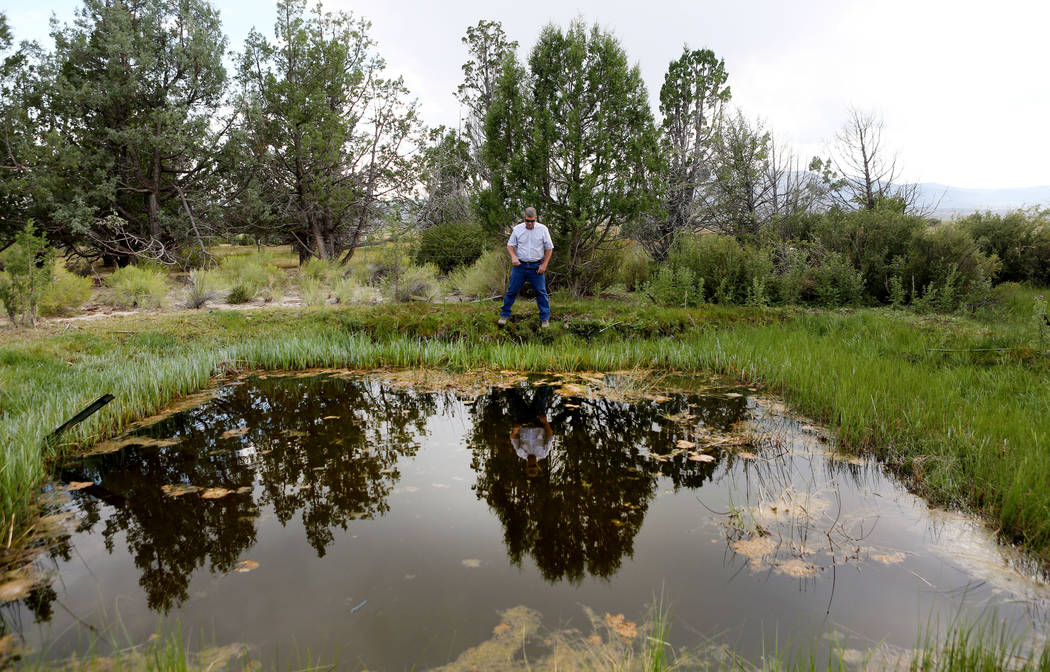
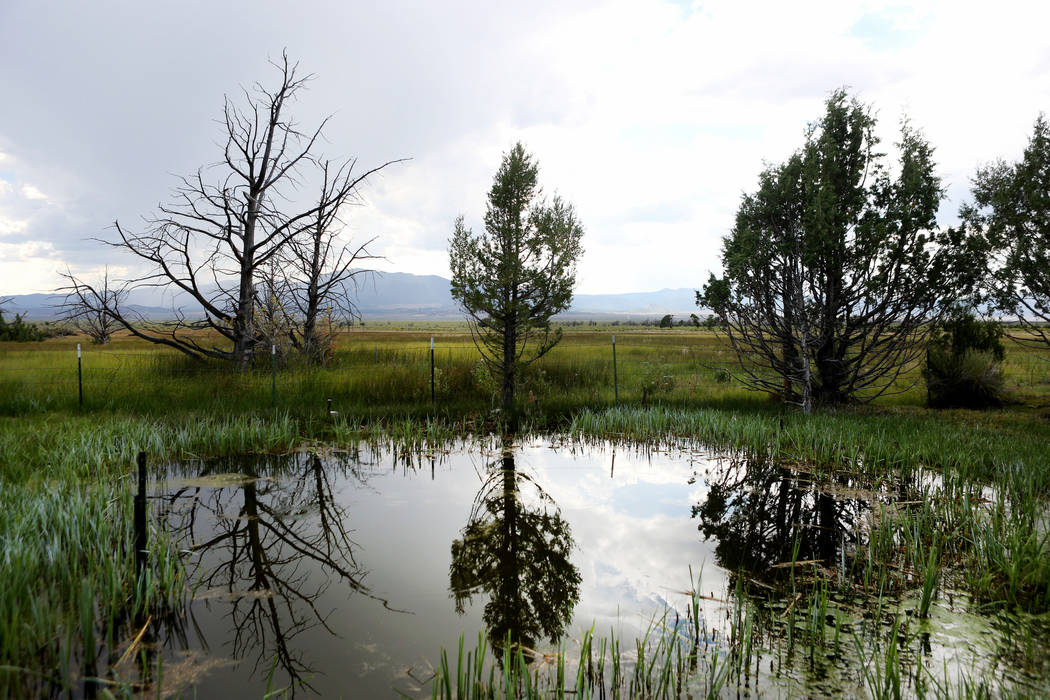

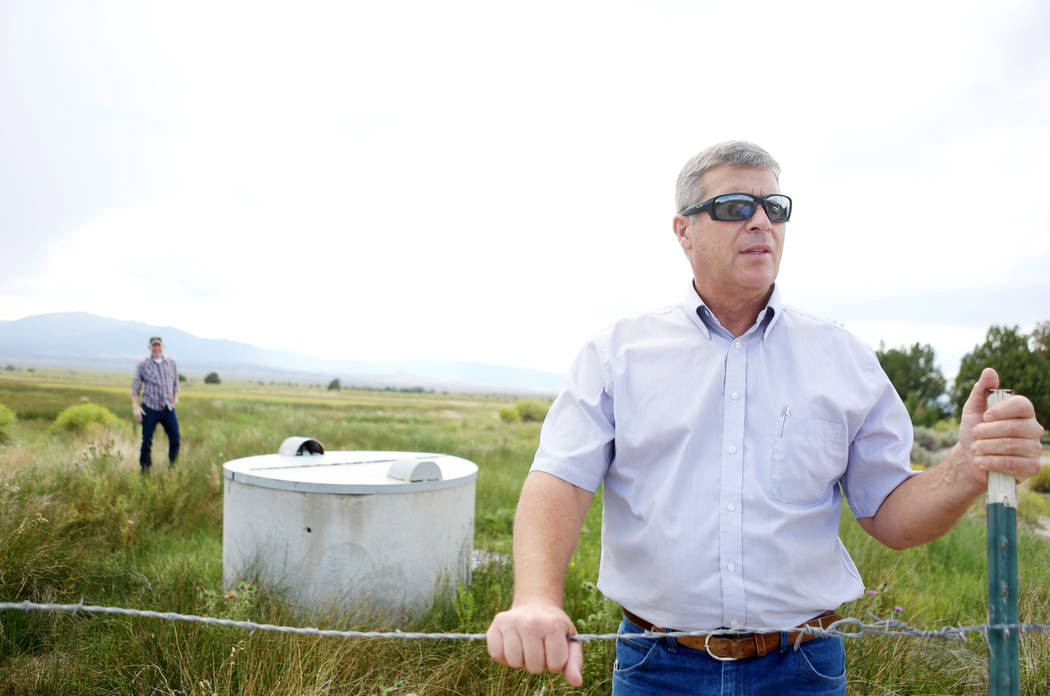
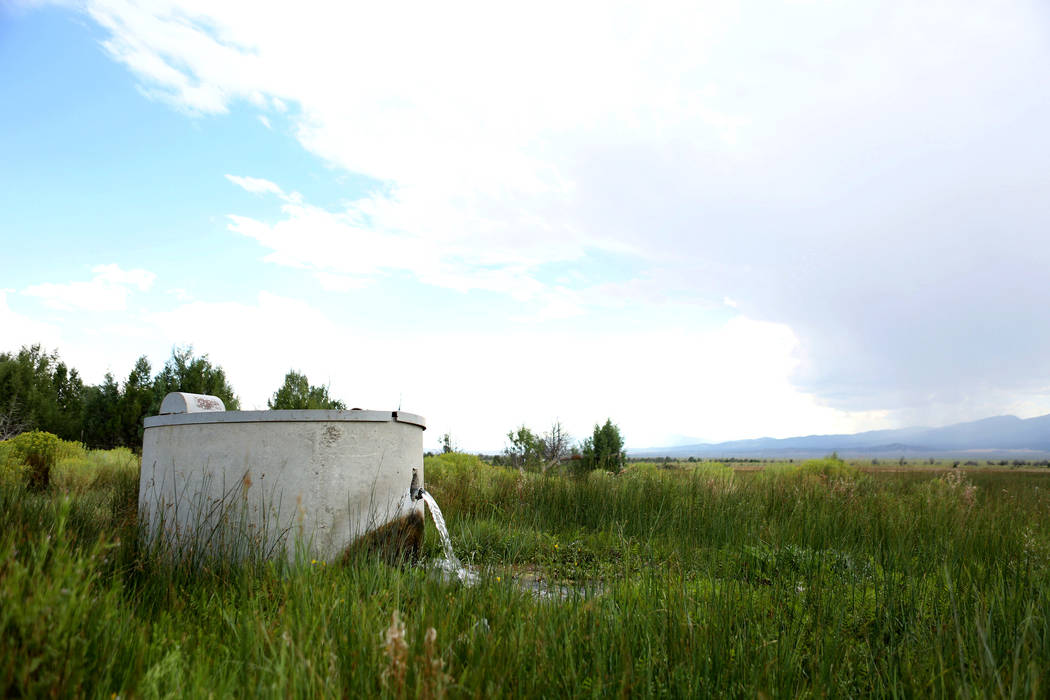

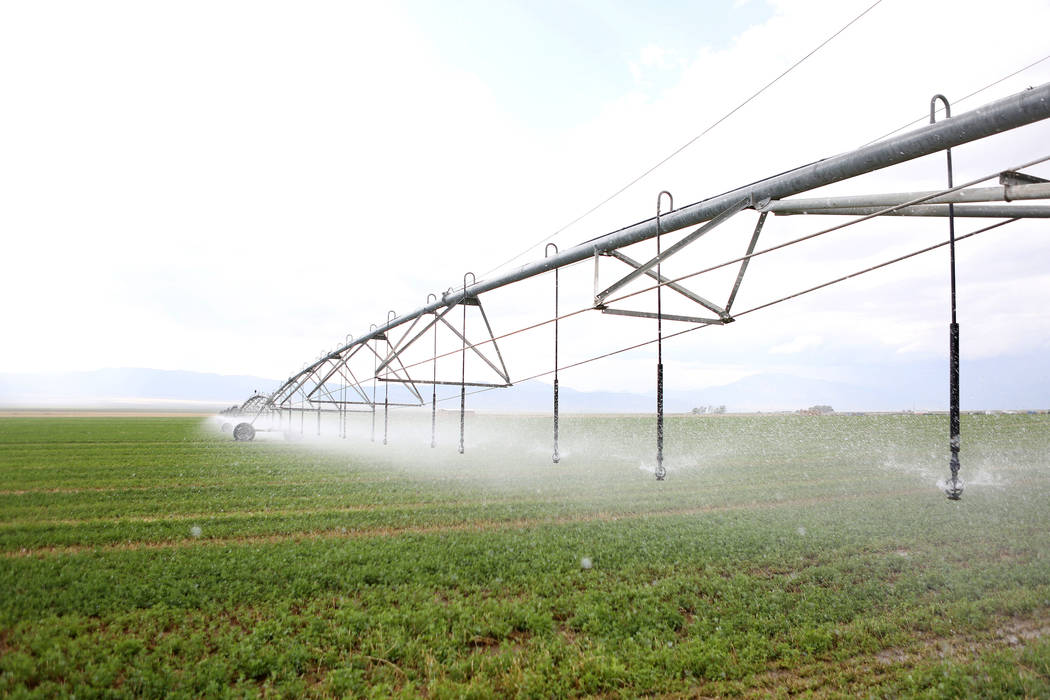
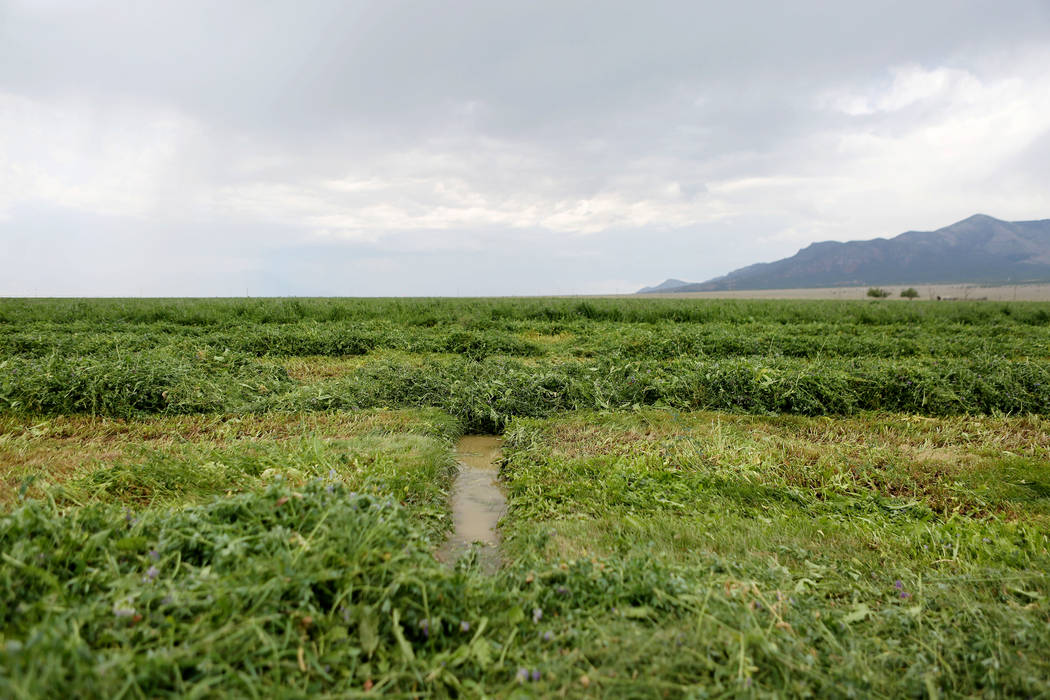

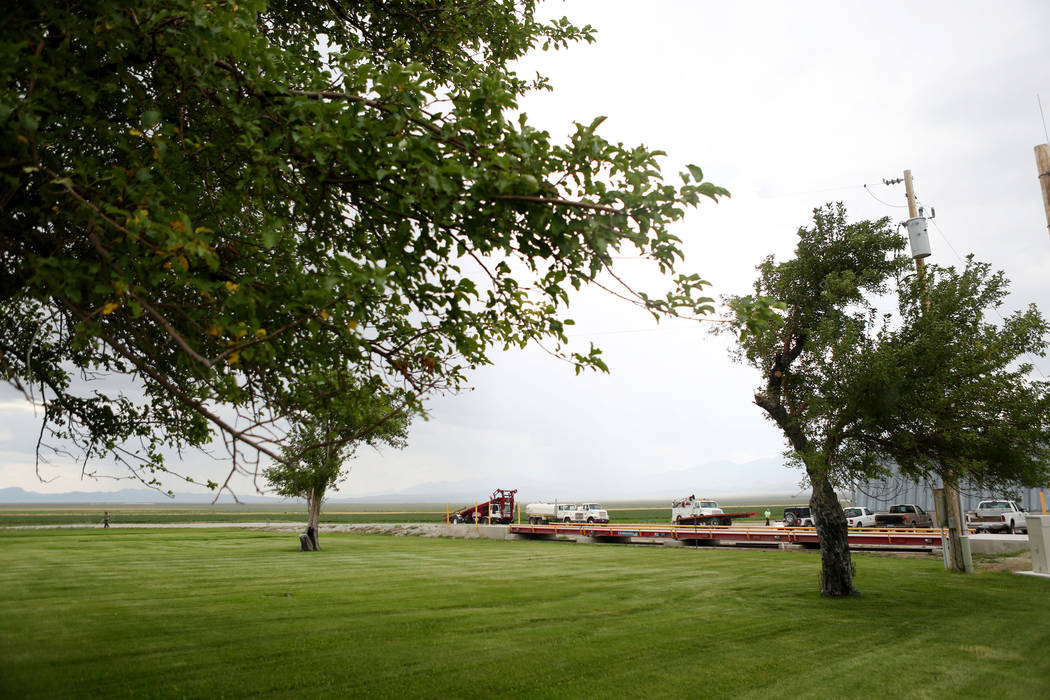

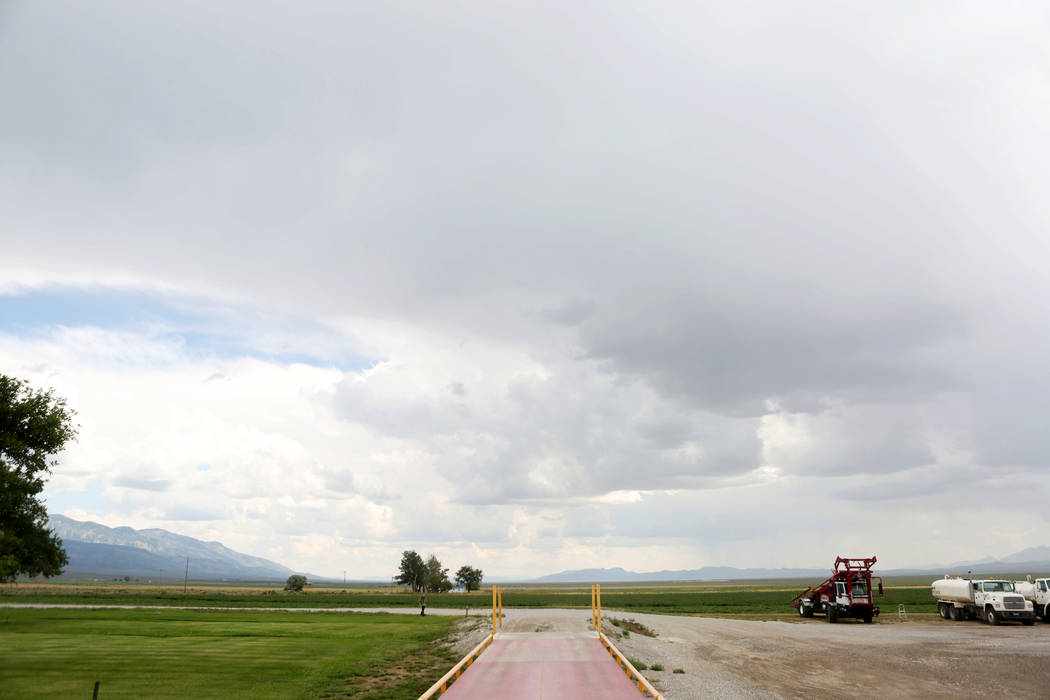
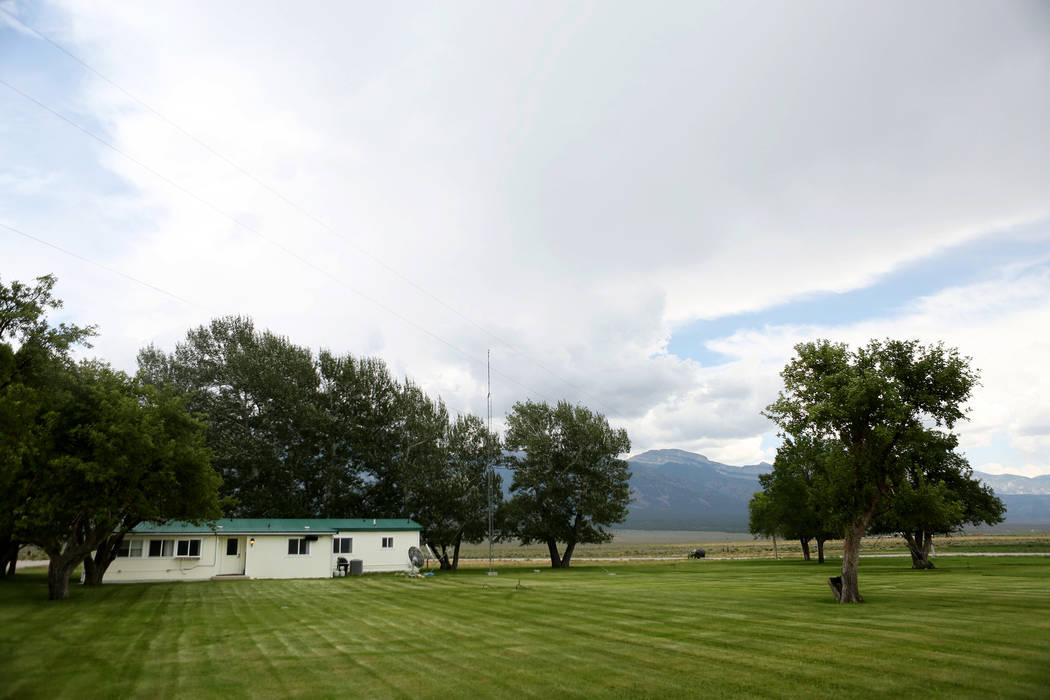




ELY — After a decade on the range, the cows all start to look the same.
For the Southern Nevada Water Authority, this is by design.
When the wholesale water supplier for the Las Vegas Valley started buying rural Nevada ranch property in 2006, the purchases came with a mismatched assortment of livestock.
Now the authority’s cows are unique in their uniformity: identical, solid black rectangles of beef grazing like a clone army across green pastures.
“It’s taken seven years to get to this point,” said Bernard Petersen, the water agency’s ranch and resource manager. “Building a beef herd can be a generational enterprise.”
Petersen isn’t finished, either.
He recently brought in a special breed of Black Angus bull from Colorado to continue refining the hand-built herd. His goal is to produce an animal that’s ideally suited for surviving — and packing on pounds — in the cold, high desert.
“We’re creating a very highly modified genetic stream of beef cattle,” Petersen explained recently at the ranch’s main office in Spring Valley, 260 miles northeast of Las Vegas. “We’re trying to fit the cow to its environment and produce an animal that is highly marketable.”
“We’re creating a very highly modified genetic stream of beef cattle,” Petersen explained recently at the ranch’s main office in Spring Valley, 260 miles northeast of Las Vegas. “We’re trying to fit the cow to its environment, and produce an animal that is highly marketable.”
It looks like he will have plenty of time to perfect his vision.
Though they’ve lost more than $4 million on their farming and ranching operation over the past 10 years, water authority officials insist they’re in the business to stay.
Harvesting water
The SNWA bought its first two ranches in August 2006 as part of a larger plan to tap groundwater in Lincoln and White Pine counties and pipe it to Las Vegas.
By October 2007, the nonprofit water agency had closed on five more livestock operations.
Eventually, all the properties were combined into the Great Basin Ranch, a 23,500-acre hay and livestock operation with access to 970,000 acres of federal rangeland.
The nearly $79 million spending spree also gave the authority what it really wanted: rights to roughly 22.5 billion gallons of water a year.
Zane Marshall, the water authority’s director of resources and facilities, said some of that water could be sent south one day in the same multibillion-dollar pipeline the agency hopes to build to siphon groundwater from Spring Valley and at least three other rural basins.
A portion of the ranch water also might be used one day to offset environmental damage from the authority’s groundwater withdrawals in the area, Marshall said.
Until then, though, the authority must continue to put its water to beneficial use. Under Nevada law, you either use your water rights or lose them.
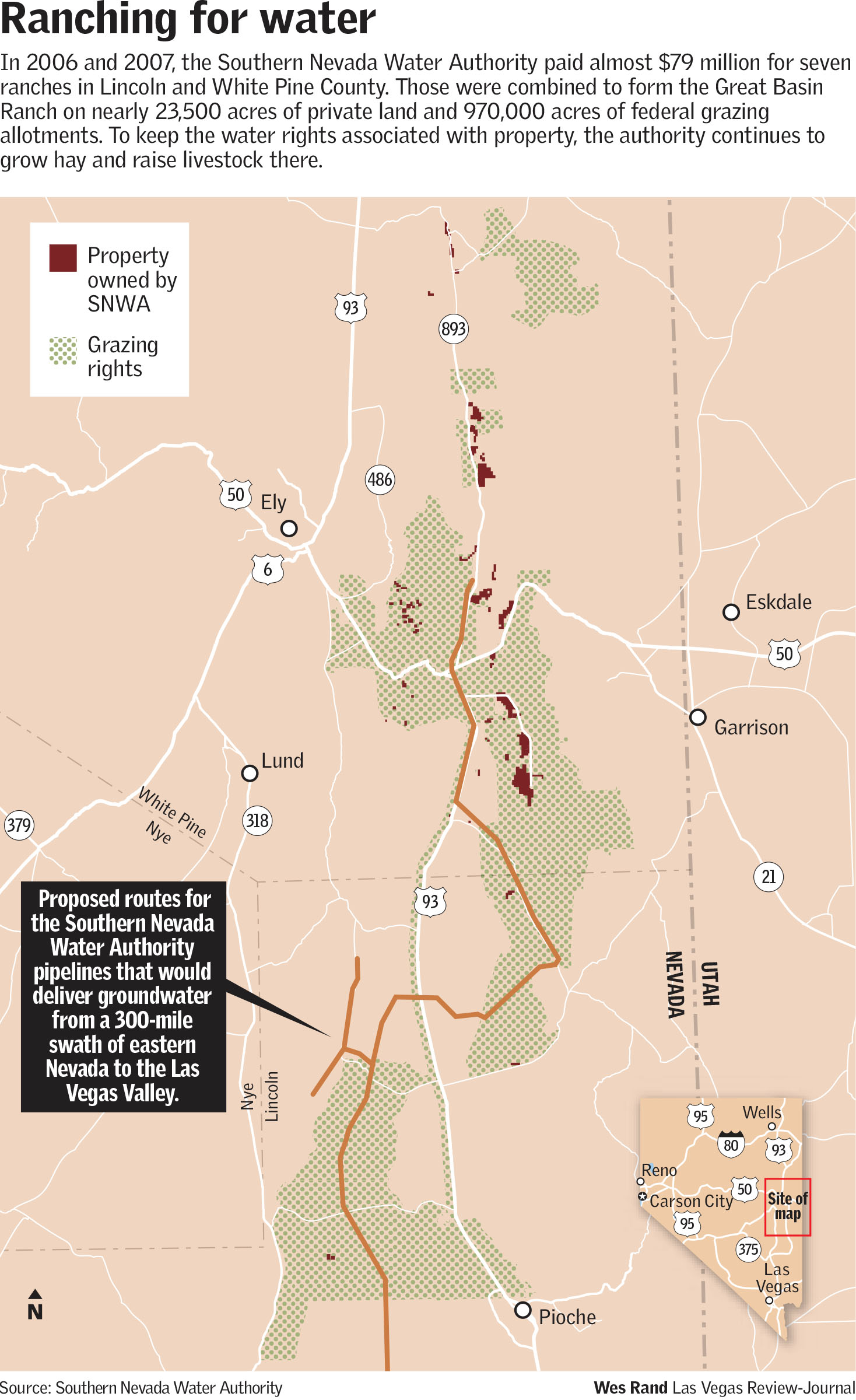
Marshall said the agency would love to see its agricultural operation make money if possible, but the primary goal is to protect its investment — namely the land, the grazing allotments and, above all else, the water.
“For us, this is all about resource management,” he said. “We’re in maintenance mode” until the groundwater is needed in Las Vegas.
So far, the results have been mixed.
After losing a combined $3.3 million in 2009 and 2010, Great Basin Ranch has operated in the black by about $350,000 over the past seven years, figures provided by the SNWA show.
Even some of the authority’s critics have noticed an improvement.
Back in 2008, then-Assemblyman Pete Goicoechea, a longtime rancher, blasted the authority for overpaying for the ranches and running them with a mixture of incompetence and reckless spending. He accused the agency of trying to buy out people who might be in the way of the pipeline project so no one would be around to notice the damage it will inevitably do.
His feelings about the ranch operation have softened since then.
“Those first few years, they had some real wrecks,” said the Eureka Republican, now a state senator. “I think they’ve settled in.”
A steady hand
Petersen is one reason for that.
The 20-year veteran of large-scale cattle and feedlot operations brought a commercial sensibility with him when he was hired by the authority in December 2010.
One of the first actions he took was to put in a truck scale near the ranch’s main office so everything coming in and going out could be weighed and accounted for.
“It’s a cash register, right?” the Nebraska native said. “It’s the mechanism for checks and balances.”
Under Petersen’s direction, Great Basin Ranch has dramatically increased its hay output.
Most fields have been converted to central pivots with large, programmable irrigation rigs that sweep across the more-than-half-mile circles of hay like the minute hand on a clock. When the hay is harvested, core samples from the bales are sent to a lab in New York for quality control and certification.
“It’s not a guess and by golly,” Petersen said.
Hay is now the ranch’s biggest revenue source, bringing in close to $1.3 million last year, compared to $1 million from cattle and just over $500,000 from sheep.
Of course, some things even the best farmers can’t control.
At the edge of one field, Petersen pointed out a pack of hay thieves in the distance — about a dozen pronghorn antelope snacking on the fruits of the water authority’s labor. Deer and elk also regularly stop by for a free meal.
“I don’t know what our tonnage is that we donate annually to the wildlife, but it’s significant,” he said.
Cross-training for cowboys
Aside from its owner, Great Basin Ranch’s most unique feature is its size, Petersen said.
It can take more than four hours to drive across it from north to south — and that’s if the weather is good.
“In winter, you have livestock strung from one end to the other,” Petersen said. “We could have cows spread over a hundred miles and sheep even farther than that.”
He said it took him a couple of years to really learn the place. Early on, he drove around with a computer tablet full of maps and diagrams. Now he knows the location and backstory of just about every fence, water source and range improvement.
“I like the chess game. I like the complexity of the puzzle and having the freedom to create my own success,” Petersen said.
The ranch employs about 25 people. They gather for a staff meeting at the ranch office once a week to discus what’s been done and what needs doing. Then they scatter, keeping in touch by radio, cellphone and satellite phone. “Surprisingly enough, we don’t have to use smoke signals,” Petersen said.
The ranch is home to about 5,100 sheep and 2,600 head of cattle.
It also keeps about 40 herding dogs, all bred and trained on-site, and two dozen workhorses.
By fall, ranch workers will have culled the last of the cows that came with the ranches — a motley blend of five or six varieties, including Angus and Hereford.
After that, Petersen said, “One hundred percent of the livestock on the ranch will be something we created.”
This is considered the slow time of year for the ranching operation. The branding is finished, and cattle are happily grazing in fenced fields on the valley floor, allowing ranch hands to catch up on maintenance and improvements.
“You still got to keep on the cows, but it gives you time to do other things,” said Tony Lopez, who grew up in Spring Valley and now serves as the ranch’s livestock manager.
On this Tuesday, Lopez woke at 5:30 a.m. for a full day’s work rounding up the rented bulls from Colorado. He did the same thing on Monday, after working day and night over the weekend to help bring in the hay crop.
When Petersen says his people can do it all, he’s not exactly bragging. Ranch workers are called on to perform a range of tasks, from herding livestock to laying pipe and pouring concrete.
“Every employee has to be cross-trained so they can accept an assignment at any location,” Petersen said. “You can’t have just one expert and a bunch of followers. You’d never get anything done.”
Well-heeled operation
The profit and loss statements for the ranch operation do not include the millions of dollars spent to upgrade the facilities and equipment there.
During this fiscal year alone, the SNWA — and, by extension, its roughly 2 million water customers in Southern Nevada — have purchased a $141,000 hay cutter and about $1.1 million worth of tractors.
The ranch also sports a pair of new open-sided barns large enough to store up to 2,000 tons of hay in 1,300-pound bales stacked almost three stories high.

Falling Water G: The Southern Nevada Water Authority has the distinction of being the only urban water agency in Nevada with its own cattle brand. Two staff members in the authority’s communications office came up with the design in 2007. The capital G with water spilling out of it is meant to symbolize the authority-owned Great Basin Ranch.
That’s the luxury of being backed by a public agency; Great Basin Ranch can afford things other operations can’t.
To help track its sheep and keep them out of nearby Great Basin National Park, a handful of ewes were fitted with satellite collars costing about $2,500 apiece.
Elsewhere, new fences have been put up, irrigation pipes replaced and water wells reconditioned so their pumps can run on solar power.
Petersen and company even went to the trouble of tidying up at the old properties the authority bought, which looked like family ranches sometimes do, each with its own ad-hoc junkyard filled with broken equipment and piles of scrap.
“We had salvagers come out and salvage the metal,” Petersen said. The rest was sent to a landfill — 35 tractor-trailers worth of trash and debris.
The ranch has also upgraded its livestock handling facilities to improve efficiency and reduce stress on the animals. Everything from the layout of the corrals to the design of the fences is meant to make them calmly go where the ranchers want them using techniques pioneered by Mary Temple Grandin, the renowned animal science professor and industry consultant on the humane treatment of livestock.
“I’ve actually been through several of her classes. I believe in her philosophy,” Petersen said. “You don’t have to prod and poke and beat on the animals. We use a gentle approach.”
“You don’t have to prod and poke and beat on the animals. We use a gentle approach.”
Long trail ahead
Aside from the occasional dispute over a shared grazing allotment, Goicoechea said he doesn’t field many complaints anymore about the water authority’s ranching business.
“Most people have come to accept that’s how it’s going to be,” he said.
When he does hear grumbling, it usually has to do with the agency’s tax-exempt status or its seemingly bottomless well of cash for new equipment, salaries and employee benefits.
“They have some advantages there. It’s a nice place to work compared to your average ranch,” Goicoechea said. “If you come up $10,000 short on your bills, it’s nice to have your ratepayers pick that up.”
But as Marshall points out, the authority has one major responsibility other ranchers don’t: “We’re also tasked with providing water to 2 million people and 41 million visitors,” he said.
The SNWA’s water resource plan for the next 50 years still includes groundwater pumped south from Cave, Dry Lake and Delamar valleys in Lincoln County and Spring Valley in White Pine County. Though conservation and the Great Recession eased some of the urgency, authority officials insist they still need to build the pipeline someday.
Current projections suggest the water won’t be needed in the Las Vegas Valley until 2035 at the earliest.
Assuming the authority gets the state and federal permits it needs for the pipeline and the water to fill it, construction of the roughly $15 billion project is expected to take a decade or more.
By then, Petersen should have his cattle herd just the way he wants it.
Contact Henry Brean at hbrean@reviewjournal.com or 702-383-0350. Follow @RefriedBrean on Twitter.
READ MORE
How much water will agency be allowed to pump out of rural Nevada?


















